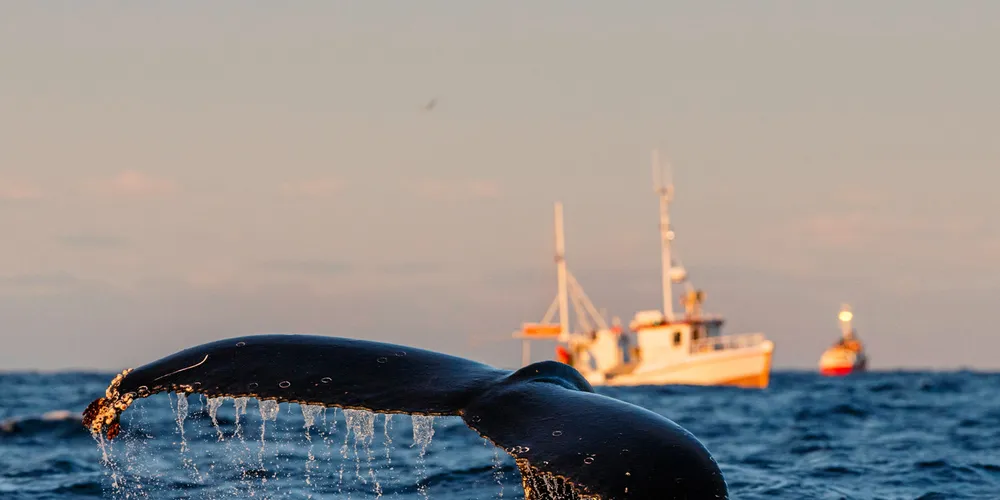US scientists see 'no direct link' between offshore wind site surveys and whale deaths
Experts say climate change a far greater risk to Atlantic species survival despite mounting calls from industry opponents for a moratorium on development activities

US marine mammal experts have hit back at allegations by offshore wind opponents that the sector’s site surveying activity is responsible for a recent spate of whale strandings on New York and New Jersey coastlines.
Nine whales – seven humpback and two sperm whales – have been discovered washed up on area beaches since 5 December, sparking public concern that their deaths are related to geophysical studies being carried out byu project developers’ survey vessels.
Scientists with National Oceanographic and Atmospheric Administration (NOAA) fisheries department and Bureau of Ocean Energy Management (BOEM) countered during a media call Wednesday that offshore wind site characterisation work is not to blame.
“There is no information that would support any suggestion that any of the equipment that’s being used in support of wind development for the site characterisation surveys could directly lead to the death of a whale,” said Brian Hooker, biology team lead for BOEM’s office of renewable energy programmes.
The surveys are ongoing for Orsted’s Ocean Wind 1 project, as well as for Shell-EDF owned Atlantic Shores – all off the coast of New Jersey.
NOAA-Fisheries has 11 active and five pending incidental take authorisations (ITAs) in the region, which permit the unintended harassment of marine mammals and other wildlife while conducting survey operations but does not allow accidental deaths.
Sarah Wilkin, coordinator of the marine mammal health and stranding response programme for NOAA Fisheries, said that necropsies (ie autopsies) performed on the nine recently stranded whales indicate vessel strikes, the most common cause of beached whale mortality.
Tissue samples have been sent to laboratories for further analysis, but “these tests may remain inconclusive” and specific cause of death unknown, she added.
The strandings are occurring amid seven years of unusual mortality events (UMEs) seen in several whale species along the US Atlantic coast.
NOAA-Fisheries data indicates that 174 humpback whales and 35 North Atlantic right whales have perished in that time.
“To date, no humpback whale mortality has been attributed to offshore wind activities,” she said.
'A miniscule amount of sound energy'
Geophysical surveys for offshore wind deploy a suite of acoustic equipment, including multibeam echosounders, sidescans, and sub bottom profilers, to assess seafloor soil conditions for the installation of foundations.
Much of this acoustic activity is outside the low frequency hearing of baleen whales such as humpback and North Atlantic right whales but could be audible to toothed species such as sperm whales.
Due to the range of equipment, “some of sounds might be out of the hearing range of certain species, whereas others would be within”, Erica Staaterman, bioacoustician with BOEM’s centre for marine acoustics.
Geological acoustic surveys in the oil & gas industry deploy seismic airguns that are designed to penetrate kilometres into the seafloor to look for evidence of hydrocarbons.
Because they operate at frequencies within the range of baleen whale hearing, “airgun surveys are of biggest concern,” said Nowacek.
High resolution geophysical sources deployed for the offshore wind industry, by contrast, “are typically smaller in the amount of acoustic energy they put into the water column,” said Staaterman.
The group is calling for a moratorium on all offshore wind activities in the region until the exact causes of the whale beachings are determined.
Causes of mortality 'remain unclear'
While scientists are confident that offshore wind related geophysical surveys are not the trigger of recent whale deaths, the causes for the long-standing UME remain unclear.
Whale behaviour has evolved in recent years with warming seas inducing changes to marine habitats and shifts in the location of food sources to areas closer to the heavily populated areas of the northeast.
This has led to surging numbers of the animals dying due to vessel strikes and fishing gear entanglement.